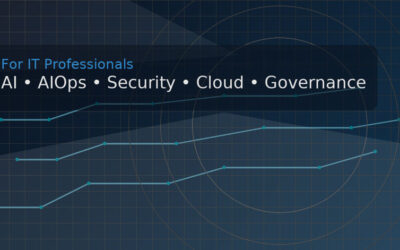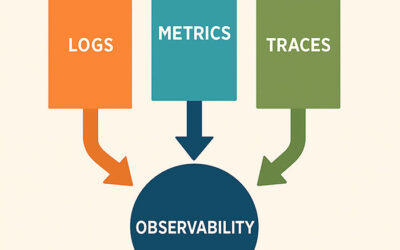The tech landscape is vast, making decisions about education and career paths particularly challenging. Two common fields of interest—computer engineering (CE) and computer science (CS)—often confuse aspiring professionals and decision-makers alike. While these disciplines intersect, their focus areas and career implications differ significantly.
Understanding Computer Science (CS)
Definition and Scope
Computer science focuses on the theory, algorithms, and principles that underpin computing. It emphasizes software development, data structures, and computational theory, equipping professionals with tools to solve problems across industries.
Key Areas of Study
- Programming: Mastery of coding languages like Python, Java, and C++.
- Data Analysis: Leveraging algorithms to extract meaningful insights from complex datasets.
- Artificial Intelligence and Machine Learning: Exploring how machines learn and adapt over time.
- Cybersecurity: Understanding and mitigating vulnerabilities in systems.
Career Opportunities
Graduates in CS typically find roles in software development, data science, and cybersecurity. They also dominate in innovative domains like blockchain, cloud computing, and artificial intelligence. For example, businesses leveraging machine learning models for predictive analytics often turn to CS-trained professionals.
Advantages of a CS Path
- Broad career prospects in fast-growing industries.
- High demand for CS professionals globally.
- Strong foundation in problem-solving and abstract thinking.
Understanding Computer Engineering (CE)
Definition and Scope
Computer engineering combines electrical engineering and computer science, focusing on hardware and software integration. It prepares professionals to design and optimize computer systems and networks.
Key Areas of Study
- Circuit Design: Fundamentals of building electronic circuits for computing systems.
- Embedded Systems: Integrating software into physical devices, from smart home gadgets to medical equipment.
- Networking: Building and maintaining communication protocols for data exchange.
- Hardware-Software Co-design: Creating systems where hardware and software are tightly interconnected.
Career Opportunities
CE graduates work in roles such as hardware engineers, embedded systems developers, and network architects. They play a pivotal role in industries that rely on Internet of Things (IoT) devices, robotics, and telecommunications.
Advantages of a CE Path
- Opportunities in industries requiring robust hardware solutions.
- A blend of skills, opening doors to software and hardware roles.
- Relevance in emerging fields like IoT and autonomous systems.
Key Differences Between Computer Engineering and Computer Science
| Aspect | Computer Science | Computer Engineering |
| Focus Area | Software, algorithms, and data | Hardware, software, and integration |
| Core Skills | Coding, theoretical problem-solving | Hardware design, system optimization |
| Applications | AI, data analysis, app development | IoT, robotics, telecommunications |
| Typical Employers | Tech companies, data-focused businesses | Hardware firms, electronics, manufacturing |
| Career Flexibility | More diverse software-related roles | Specialized in hardware-software interactions |
While CE overlaps with CS in areas like programming, its emphasis on hardware distinguishes it as more specialized and applied. Conversely, CS offers broader opportunities in software-centric industries.
Making the Right Decision
Choosing between CE and CS depends on your interests, career goals, and the industries you aspire to impact.
Considerations for Decision-Makers:
- Business Goals:
Companies needing cutting-edge AI capabilities may prioritize CS expertise, while those building IoT devices might favor CE professionals. - Technology Integration:
Organizations often require both CS and CE skill sets to innovate effectively. For example, an autonomous vehicle project demands hardware design (CE) and advanced algorithms (CS). - Market Trends:
- CS aligns with growing demands for software development and AI innovation.
- CE matches the rise of smart devices and connected ecosystems.
- Team Composition:
Leaders balancing tech teams should recognize that both CE and CS professionals bring complementary strengths. Encouraging collaboration ensures holistic problem-solving.
Emerging Fields Blending CE and CS
Some domains require a hybrid of CE and CS expertise:
- IoT Development:
Creating connected devices combines software programming with embedded systems expertise. - Autonomous Systems:
From drones to self-driving cars, CE ensures hardware reliability while CS powers decision-making algorithms. - Edge Computing:
Localized computing close to hardware (CE) works with cloud-driven data processing (CS) to minimize latency and enhance performance.
The Industrial Impact of Computer Science and Computer Engineering
Computer Science’s Influence Across Industries
Computer science drives innovation in several high-growth sectors:
- Healthcare Technology
- Role in Precision Medicine: CS enables the development of algorithms for processing complex biological data, crucial for personalized healthcare solutions.
- Health Monitoring Applications: Apps like fitness trackers rely on CS professionals to design user-friendly interfaces and secure data transmission protocols.
- E-commerce and Retail
- Advanced CS techniques such as recommendation algorithms enhance customer experience, drive sales, and optimize supply chain logistics.
- The rise of artificial intelligence in online platforms is transforming user interactions.
- Finance and Banking
- Financial systems increasingly rely on machine learning models for fraud detection and risk assessment.
- Blockchain technology, powered by CS, is revolutionizing how transactions are verified and secured.
Computer Engineering’s Role in Transformative Technologies
Computer engineering influences hardware-heavy domains:
- Automotive Innovation
- Autonomous Vehicles: CE professionals develop the hardware and control systems that enable self-driving cars to process and act on sensor data.
- Electric Vehicles (EVs): Engineers optimize battery management systems and electronic control units, balancing power and efficiency.
- Smart Manufacturing
- Robotics and automation systems, foundational to Industry 4.0, require CE expertise to design intelligent machines.
- Real-time monitoring systems in factories depend on embedded systems developed by CE specialists.
- Telecommunications
- CE professionals are pivotal in designing 5G infrastructure and devices, ensuring faster and more reliable internet connectivity.
- Innovations in satellite communications and IoT depend heavily on hardware and software co-design.
Emerging Trends in Both Fields
Artificial Intelligence Integration
Both CE and CS are critical to AI. While CS develops machine learning models, CE integrates these models into hardware solutions for robotics, automation, and more.
Green Computing and Sustainability
As businesses become eco-conscious, CE focuses on energy-efficient hardware, while CS contributes through optimized algorithms that reduce energy consumption in data centers.
Edge Computing
Edge computing combines CE’s hardware expertise and CS’s data processing algorithms. By processing data locally on devices rather than in centralized servers, businesses can reduce latency and enhance user experiences.
Augmented Reality (AR) and Virtual Reality (VR)
AR and VR development requires both:
- CS Expertise: For creating immersive experiences through software.
- CE Expertise: For building responsive and ergonomic devices.
Educational Pathways and Certifications
Degrees and Programs
- CS Degree Options: Many universities offer flexible programs, such as a Bachelor of Science in Computer Science or combined degrees in data science.
- CE Degree Options: Programs often integrate electrical engineering coursework, giving students a well-rounded hardware background.
Certifications
Adding certifications can bolster credibility and skillsets:
- For CS Professionals: Certifications in cloud computing, data analytics, or ethical hacking.
- For CE Professionals: Cisco Certified Network Associate (CCNA) and certifications in embedded systems or IoT.
Interdisciplinary Studies
Some programs offer a blend of CE and CS, preparing professionals for hybrid roles. For example, a degree in robotics might include courses in both disciplines.
What Employers Look For
When hiring CE or CS professionals, employers often prioritize:
- Problem-Solving Skills
- CS graduates excel in abstract thinking and creating software-based solutions.
- CE professionals are adept at troubleshooting and optimizing physical systems.
- Practical Experience
- Internships and co-op programs provide valuable exposure.
- Employers favor candidates with experience in collaborative tech environments.
- Industry-Specific Knowledge
- Professionals targeting specific sectors should understand the nuances of that industry. For instance, CS roles in healthcare might require knowledge of health data regulations like HIPAA.
Building Collaborative Teams: CE and CS Synergy
Organizations benefit most when CE and CS professionals collaborate:
- Product Development Cycles
- In creating a smart device, CE teams design the hardware while CS teams handle the software interface and cloud integration.
- Close coordination ensures products meet market demands.
- Innovation in Research and Development
- AI projects often require CE for hardware accelerators like GPUs and CS for training deep learning models.
- Operational Efficiency
- Businesses integrating CE and CS expertise optimize both system performance and user satisfaction.
Examples of Real-World Applications
Smart Home Technology
- CS Contribution: Software algorithms enable voice recognition and integration with apps.
- CE Contribution: Engineers design sensors and smart devices to interact seamlessly with the software.
Space Exploration
- NASA missions rely on CE to design robust spacecraft systems and CS to develop data analysis software for interpreting mission results.
Investing in the Right Talent
For organizations aiming to leverage these disciplines:
- Assess Long-Term Needs: Predict whether your industry will lean more toward software innovation or hardware development in the future.
- Foster Continuous Learning: Encourage teams to upskill, ensuring they stay relevant amidst evolving technologies.
- Balance Expertise: Building a multidisciplinary team ensures versatility and resilience in tackling challenges.
Final Thoughts: Which Path is Right for You?
The decision between computer engineering and computer science isn’t just about personal interest or immediate job opportunities. It’s about aligning strengths with future market needs. Both fields offer lucrative, impactful careers, and choosing the right one could position you or your organization for long-term success in a competitive, tech-driven world.
For professionals and decision-makers, understanding the unique capabilities of CE and CS ensures you can make strategic hires, invest in relevant technologies, and guide your team toward innovation.






